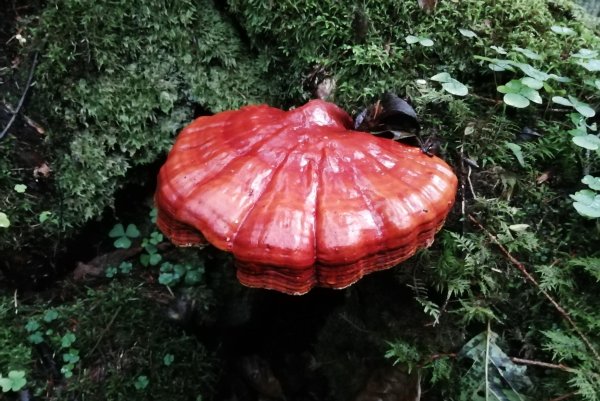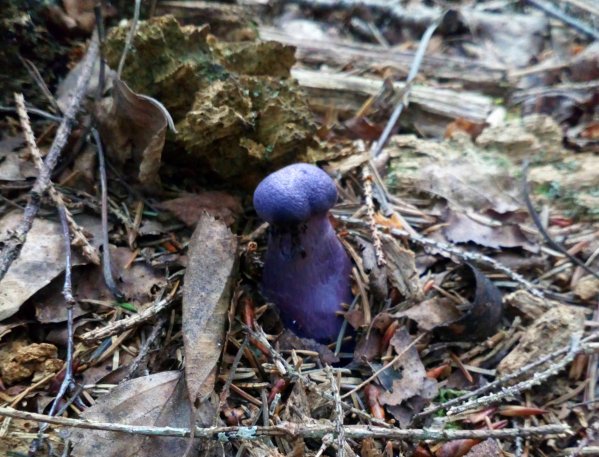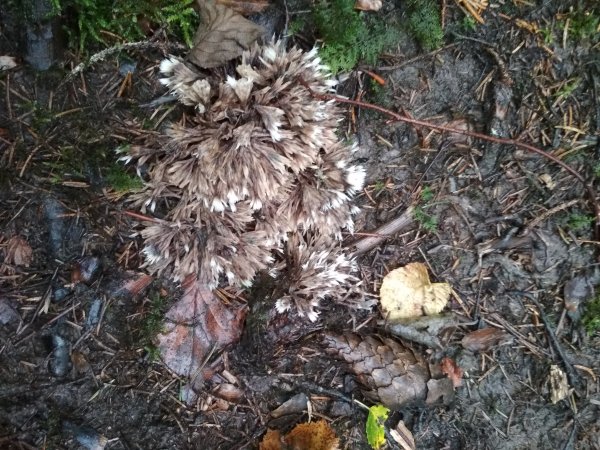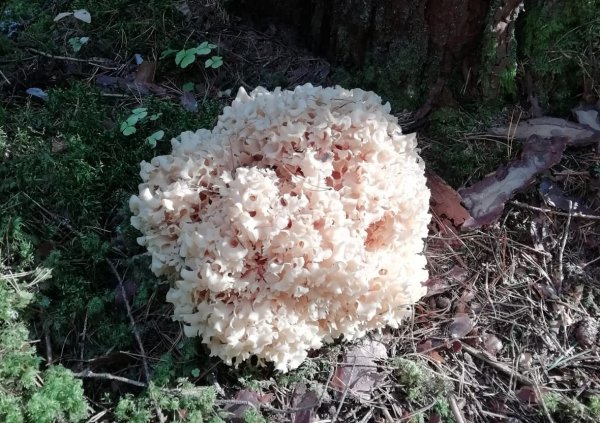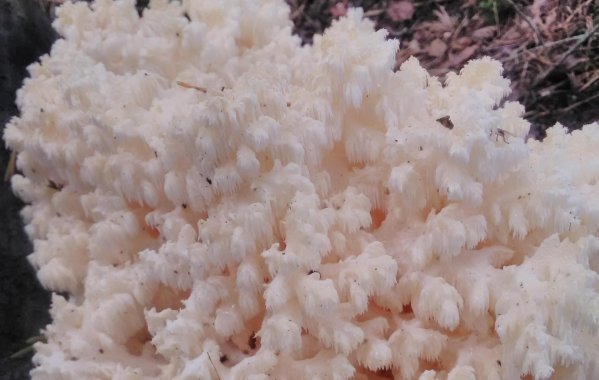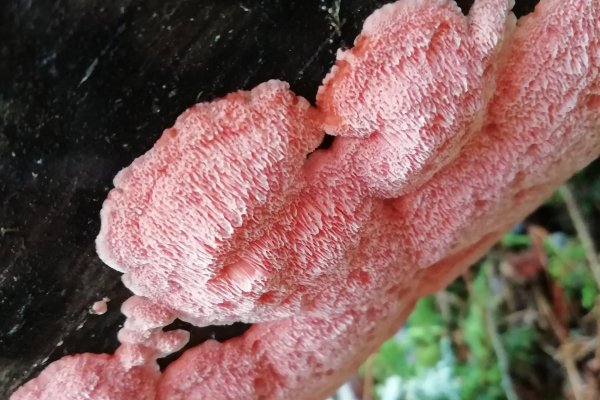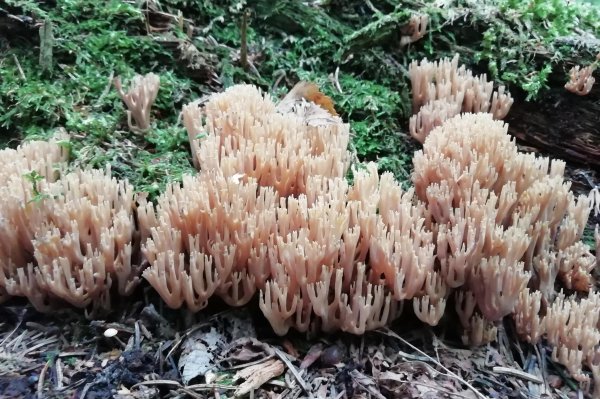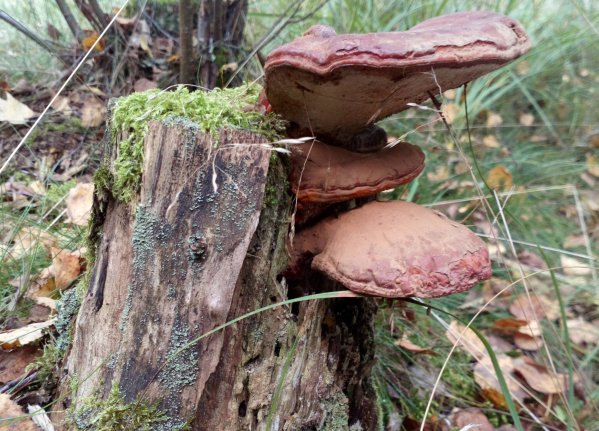LVM Environmental Experts Spot Rare Mushroom Findings
Autumn is a colourful time full of riches of the forest. For the environmental experts of JSC “Latvia’s State Forests” (LVM), it is also rich in special findings – rare and even specially protected mushrooms have been spotted in different parts of Latvia, in forest stands of different ages.
While surveying economic forests in East Vidzeme region, LVM Senior Environmental Expert Uģis Bergmanis found two specific species of natural forest habitats (polypores) on the trunk of a withered spruce tree – the specially protected pink polypore (Fomitopsis rosea) and the rare Crustoderma dryinum.
While inspecting the planned nature facility in the vicinity of Roja, LVM Environmental Expert Daina Lakša found a small, all-dark purple leaf fungus – violet webcap (Cortinarius violaceus). This fungus is rare in Latvia, mostly to be found in deciduous forests. However, some years it can be spotted more frequently. According to the Big Book of Latvian Mushrooms, although this mushroom is edible, it is not recommended to eat it. Unlike other purple leaf fungi, violet webcap is all-purple – its flesh is purple inside, and the surface of its cap is scaly.
LVM Environmental Expert Dace Kroģere, on the other hand, managed to find the relatively rare urchin earthfan (Thelephora penicillata). It is not edible, but attracts attention with its unusual appearance.
Peculiar and rare observations can be made almost every day. This autumn, Environmental Planning Specialist Sandra Līckrastiņa found a beautiful, specially protected species in Latvia – cauliflower fungus (Sparassis crispa) in a specially protected nature territory in the vicinity of Tartaka in Krāslava Municipality. This species is rare, and it can be found near pine trunks in autumn. It has been included in the Red Book list in Latvia, as well as in Lithuania and Estonia.
On fallen trees of various deciduous trees grows the specially protected coral tooth fungus (Hericium coralloides), which can reach the size of a soccer ball. This autumn, Environmental Expert Aigars Kalvāns found it in a forest near Ropaži. This is only the second known such finding in West Vidzeme region. According to the LVM GEO database, 13 findings of this fungus species are known in the territory managed by the company. LVM environmental experts have found it in five new places this autumn.
In South Latgale region, near Zasa, Environmental Expert Vija Kreile counted as many as 11 fruit bodies of a coral tooth per fallen tree.
Visually expressive specific species of natural forest habitats – brown rot fungus (Rhodonia placentus) – was seen this year on fallen trees in coniferous forests in East Vidzeme, where it was found by Environmental Experts Uģis Bergmanis and Gaidis Grandāns, as well as in South Kurzeme, where the bright mushroom was noticed by Environmental Planning Expert Solvita Reine.
There are also other equally beautiful mushroom species, which are more common in habitats of different quality, as well as in forests, which in other respects do not correspond to the criteria of a protected habitat. For example, crown coral (Artomyces pyxidatus), which grows on various deciduous fallen trees, as well as tough bracket fungus (Phellinus populicola) – on aspen trunks.
Rarely found, especially protected is lingzhi (Ganoderma lucidum), which grows on withered deciduous tree wood. The cap of the mushroom is reddish-brown, the surface is hard and shiny. This year, in the territory managed by LVM, it was found in South Latgale region by Environmental Expert Vija Kreile, in an old aspen forest at the ground of a birch trunk. In turn, in North Kurzeme, in a 40-year-old birch grove, these mushrooms were noticed by Environmental Expert Daina Lakša; they were growing on stumps that were left after tending.
Work on the recognition of rare mushrooms is very important, therefore LVM environmental experts appreciate close cooperation with Ivars Leimanis from the Nature Protection Board, who helps them in identifying different mushroom species.

